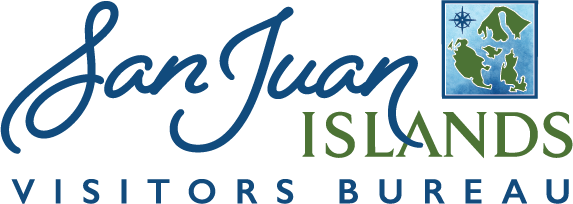
Learning and volunteering with your kids helps you live like locals. Discover these 10 ways to give back to island communities during your visit!
Orcas were declared endangered in 2005, and since then, the Southern Resident orcas have struggled to maintain their numbers. Even with the birth of 9 orca calves in 2014-2015, the three pods still only have 78 members. Through the Whale Museum, you can Adopt an Orca—and get adopted yourself into the family of other orca lovers—helping support the stewardship and conservation efforts to save the precious Southern Residents.
To learn more about the Adopt-an-Orca program, or before you go out on a whale watch boat, a visit to Friday Harbor’s Whale Museum is essential. Wonder at several real skeletons of cetaceans—whales, dolphins, porpoises—that let us look inside the world of these magnificent creatures. One of the skeletons is Sooke (L-112), a young orca that died and washed up on Long Beach on the Washington Coast in 2012. A time-lapse video shares the preparation of the bones through images and artifacts from the process, letting you and your kids see behind the scenes at the museum.
Have you ever wandered a pristine beach to find you are passing a beer can here, and a cigarette butt there? You think—I should pick those up—but then you’d be hauling an armful of garbage along with you? Once a year at the The Great Islands Clean-up, the Earth Day Beach Cleanup on Henry Island, in Moran State Park on Orcas and other beaches and parks, you get a chance to do your part and pick it up! Check out our Volunteer Vacations page for updates on these events.
Grab your camera and notepad and spend a spring day in the San Juan Islands National Historical Park as a part of a team working on identifying as many plants, animals and insects as possible. Each year at the National Parks BioBlitz, scientists of all sorts work to create a taxonomy, or record of what lives in the park. Each year, there is a different focus, from amphibians to pollinators to various types of plants, flowers, trees and more.
Standing on the shores of Buck Bay on Orcas Island, you can look out over the oyster and clam beds and out over the Salish Sea, shuck an oyster fresh from the bay, and savor a sweet, briny morsel that tastes like the sea. These waters are constantly threatened by climate change that is warming the water, pollution, erosion and other factors. Oysters, like other bivalves, filter the water and help remove pollution, heavy metals and more. Supporting sea farms such as Buck Bay Shellfish Farm on Orcas Island and Westcott Bay Shellfish Company on San Juan Island is a way to support clean water, and the interaction of our food system with the natural world. Plus … delicious!
At the Saturday farmers market on Orcas Island, Lopez Island and San Juan Island, you can find everything you need for your family brunches and barbecues, from farm-fresh eggs and island-raised bacon, to fresh oysters, lamb chops, pork ribs, fruits and vegetables and fresh flowers. Shopping this way helps save food miles (the fuel that is spent bringing outside food to the consumer), and helps support our precious island farms and keep the farmers in business. Plus, just-picked produce, hormone free milk and cheese and humanely raised meats taste more delicious and nourish the body and soul.
Stewardship of natural places is so important, and saving our agricultural places is equally important, especially on an island, where much of a food system is shipped in. There is a long, fascinating history of agriculture in the islands, from the early native people who moved around the islands seasonally to harvest plants such as camas, cattail, salal berries and many more, as well as salmon and other seafoods.
Island natives built settlements and established farming and fishing practices. When European settlers came, they created ranches, farms and orchards that grew into a successful agricultural economy. Fruit growers shipped thousands of tons of fruit to the mainland each year, until irrigation in Eastern Washington took that business over the Cascades. But there is a renaissance happening in farming, with more young farmers growing food, producing artisan products and creating a vibrant community of food and farm lovers. Find an island farm to visit.
Savor the local flavors of the San Juan Islands and support local businesses as you dine. Many menus will indicate when ingredients are sourced from the islands and it's a great opportunity to have a conversation with your server about eating local. Discover places to dine here.
One of the best things about a visit to the San Juans is hiking through the stunning landscape, from rolling bluffs covered with moss, to pebbled beaches to deep, quiet forests. If we all live by the “Pack it in, Pack it out” rule, and truly Leave No Trace, the natural places on the islands will be beautiful and pristine for your visit next year and for generations to come.
The San Juan Islands are full of non-profits that work hard to support our community. From food banks and trail networks to theaters and education groups, the islands are full of passionate locals looking to give back. Get involved with one of the many non-profits, donate to their cause, or visit the different community foundations' website for a more complete list of organizations. Orcas Island Community Foundation, San Juan Island Community Foundation, Lopez Island Family Resource Center